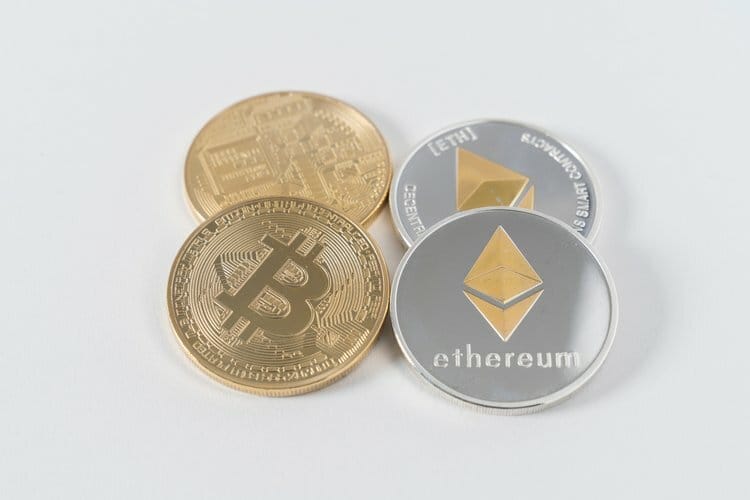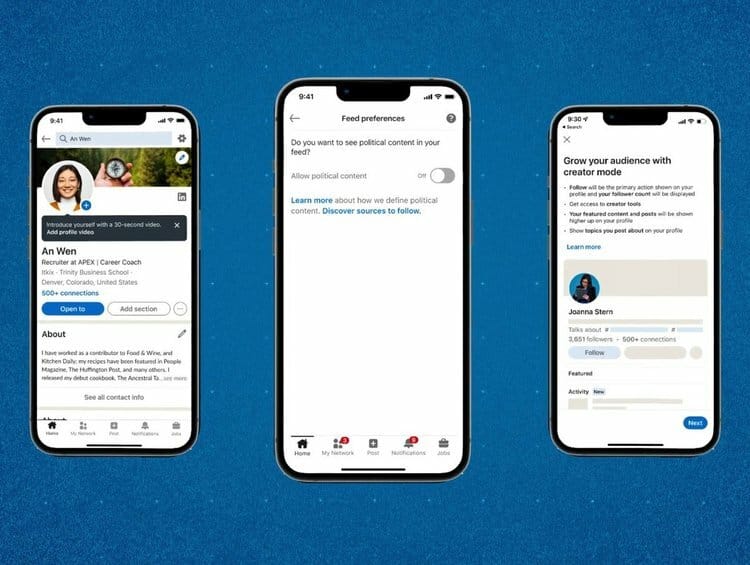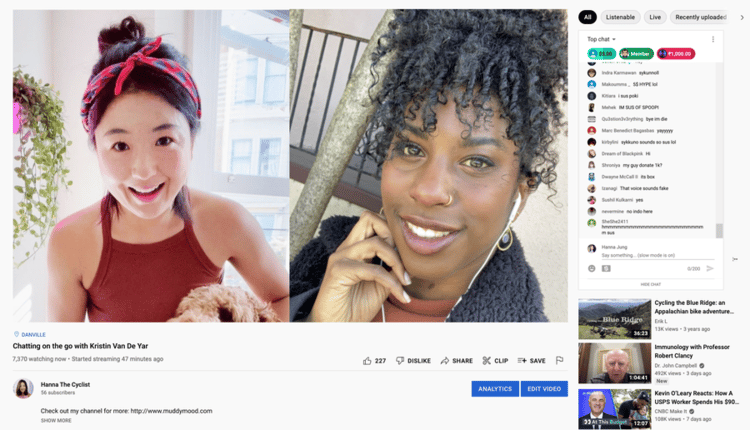Good morning! A quick thank you to all the new folks that have signed up for this newsletter over the last couple of weeks. I appreciate it and hope you are enjoying it!
Today’s Edition:
Platforms expand to support cryptocurrency payments for creators
Instagram launches Private Story Likes
LinkedIn tests a “no politics” feature

Twitter added several new payment options this week for its tipping feature, allowing creators to receive tips from their fans. Among the new options is the ability for creators to receive Ethereum tips.
This move is the latest effort from several platforms that are expanding to crypto payments for creators. In the last few months, platforms like Lumanu, IZEA, and BBTV, have rolled out features to give creators the option to be paid in cryptocurrencies. Their approaches have varied, ranging from paying creators in a combination of crypto and fiat currency, like USD, to paying creators entirely in crypto.
There are still a lot of questions surrounding crypto, but one thing is for sure: it is playing a significant role in the creator economy. Most creators' interactions with crypto come from investing in it or through crypto-powered experiences, like non-fungible tokens (NFTs) and creator coins.
In the coming years, I anticipate that creators' interactions with crypto will increasingly come from accepting crypto as payment for their own digital and physical products, getting tips from fans, and being compensated for branded content campaigns.
This trend will accelerate for two main reasons: a growing number of platforms will support payments, thereby making it easier for creators to actually accept it, and creators’ interest in diversifying their revenue streams to maximize their business will continue to grow.
Crypto support will be used by social media platforms and creator economy companies to entice creators and advertisers to their respective destinations. In the social media platform landscape, Instagram, YouTube, and others will also add functionality to continue the feature wars. Influencer marketing platforms will use cryptocurrency payments to attract advertisers who need flexibility in how they compensate creators, while creator monetization platforms will offer creators as many means as possible to receive funds.
When creators diversify their revenue streams, they usually do so by monetizing their work through different models, such as branded content, subscription services, and digital and physical products. Adding to this, creators will look at crypto and other forms of digital currencies as a way to diversify their revenue stream even if they are volatile. Crypto payments have other advantages for creators, such as faster and easier transactions. This will allow creators to get paid almost immediately rather than having to wait for a transaction to be processed.
Crypto's pros and cons will drive forward-thinking creators who aren't risk-averse to adopt early, while those who depend on money from their efforts as a creator to pay their bills will hesitate. As crypto becomes more mainstream, this will change. As made evident by Coinbase’s buzzworthy Super Bowl commercial and major banks recently investing in crypto, digital currencies have a place in today’s monetary system.
So what does this mean for marketers? Well, an opportunity exists for marketers to experiment with crypto as payment for creators and gain an early-mover advantage.
Marketers could test the waters by surveying their network of creators to see if they have any interest in receiving payment in digital currencies. If so, they can actually run campaigns where a portion or full payment is in some form of crypto. The insights gained from these will be valuable when crypto payments are more common, especially in the creator world.
Quick Hits
Instagram has started rolling out Private Story Likes. The feature allows users to like a Story they view. Instead of likes being sent as a direct message, likes will appear to the creator in the Stories view sheet as a heart next to the user's handle. Likes are private and don't have any count. Previously, the only way for users to respond to a Story was to send a DM or use an emoji reaction.
Private Story Likes offers users a new way to interact with Story content, which gives creators and brands a new way to measure the impact of the Story content they share. In contrast to in-feed content, Story offers fewer opportunities for users to interact and engage, so adding this new feature will help marketers and creators better assess whether their content is resonating with users. This can be useful for influencer marketing campaigns since marketers have another metric to consider when elevating sponsored Stories' performance.

LinkedIn is testing an 'Allow Political Content' toggle. Ryan Roslansky, CEO of LinkedIn, said in a recent interview with The Wall Street Journal that the platform is testing a new setting that will allow users to decide whether or not to display political content in their newsfeed. Users who are part of the test will now see the option to toggle on or toggle off 'Allow Political Content' in Feed Preferences. To determine political content, LinkedIn is using a combination of its editorial team and flagging specific keywords.
Who would have thought it would be LinkedIn leading the charge in enabling users to determine whether political content shows in their newsfeed or not? Although social media and politics have become somewhat entangled over the past three years, there are varying opinions on whether politics belong on social media. By giving users the option to see or not see political content, LinkedIn is able to support those who are open to seeing political content and those who don't want to see it. According to more than half of U.S. social media users, political discussions and posts tire them out. A new feature like this will have a positive effect on some users.

YouTube shared its roadmap for the year. In a blog post, YouTube’s Chief Product Officer, Neal Moha, detailed upcoming product releases. With a focus on Shorts, the platform plans to help content creators monetize with branded content deals through BrandConnect, Super Chat fan tipping, and shopping. Among other planned features and tools, YouTube will launch collaborative live streams, new YouTube Studio insights, and support for Web3 technologies, such as blockchain and NFTs.
YouTube’s 2022 will be a busy one with a number of exciting product releases that span across emerging categories like short-form video, creator monetization, and Web3. Collectively, these will further enhance YouTube as a destination for social commerce.

Snapchat is testing a revenue share with select creators. The platform is partnering with Snap Stars, who are verified creators with a large following, to place mid-roll advertisements in their Stories, and in return, the creators can earn money. The amount that creators will receive depends on several factors, including how frequently they post and how much engagement they receive. This marks the first time that the platform will enter a rev share with creators.
Mid-roll ads build upon Snapchat's growing library of tools and ways for creators to monetize, which already include Spotlight payouts, the Creator Marketplace, and Creator Gifting. The addition of a rev share incentivizes and rewards the platform’s top creators for churning out engaging content. It also provides advertisers with a new way to reach audiences through creator content.
The most surprising aspect is that Instagram hasn’t yet launched something like this, as many of its creators are already creating these types of ad breaks on their own.

Chart Of The Week:
39% Of Brands Focus On Engagement Or Clicks When Evaluating Influencers

As part of its annual The State of Influencer Marketing 2022: Benchmark Report, The Influencer Marketing Hub surveyed over 200 marketing agencies, brands, and marketers regarding the state of influencer marketing. The report includes a wide range of information, including budgets that brands are allocating and the platforms that they are investing in for their influencer marketing campaigns.
One of the most interesting data points was the criteria that marketers use when evaluating influencers. 39% of respondents said engagement or clicks are most important. This is not too surprising since both are good indicators of whether or not creators and their content resonate with audiences. This is actually similar to the results of last year's report. However, the thing that did change from last year is that more brands see content type/category as more important (23%) than views/reaches/impressions (21%).
Why the change? It's likely because more marketers are adding paid media spending into their influencer marketing efforts. Consequently, the asset being produced on their behalf is more important than their organic reach, since advertising dollars can help them efficiently reach audiences at scale.
Considering current trends, I expect that the importance of content type/category will rise even more than views/reaches/impressions, as paid media becomes an integral part of influencer marketing.
In a similar vein, sales, which 11% of brands cite as an important influencer criterion, will also increase since more brands are seeking to partner with creators who are able to drive sales through shoppable content and tracking links.
What I’m Reading
Football player Kayvon Thibodeaux is the new face of Starface (Glossy)
Walmart, NYX partner with Triller to boost Black creators (Marketing Dive)
How the producer economy is changing influencer marketing (Marketing Dive)
Inside the social strategy that squeezy bottle olive-oil brand Graza used to make its DTC debut (Marketing Brew)
Why is Pinterest trying to be TikTok?(Observer)

Social Media Platforms & Creator Companies Are Expanding To Crypto Payments